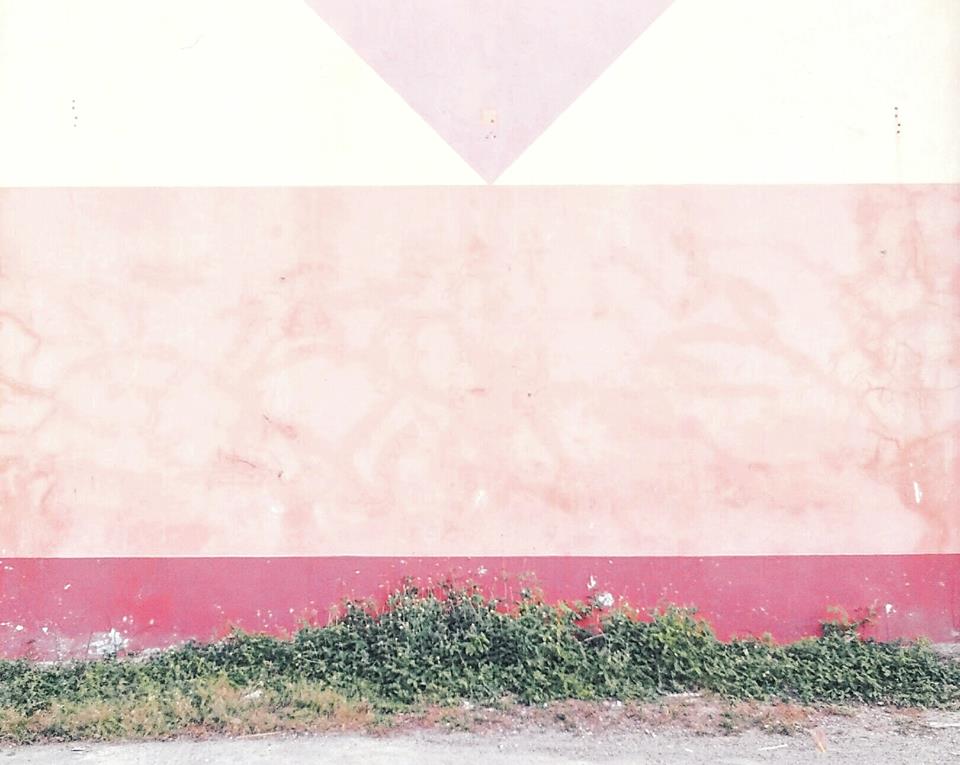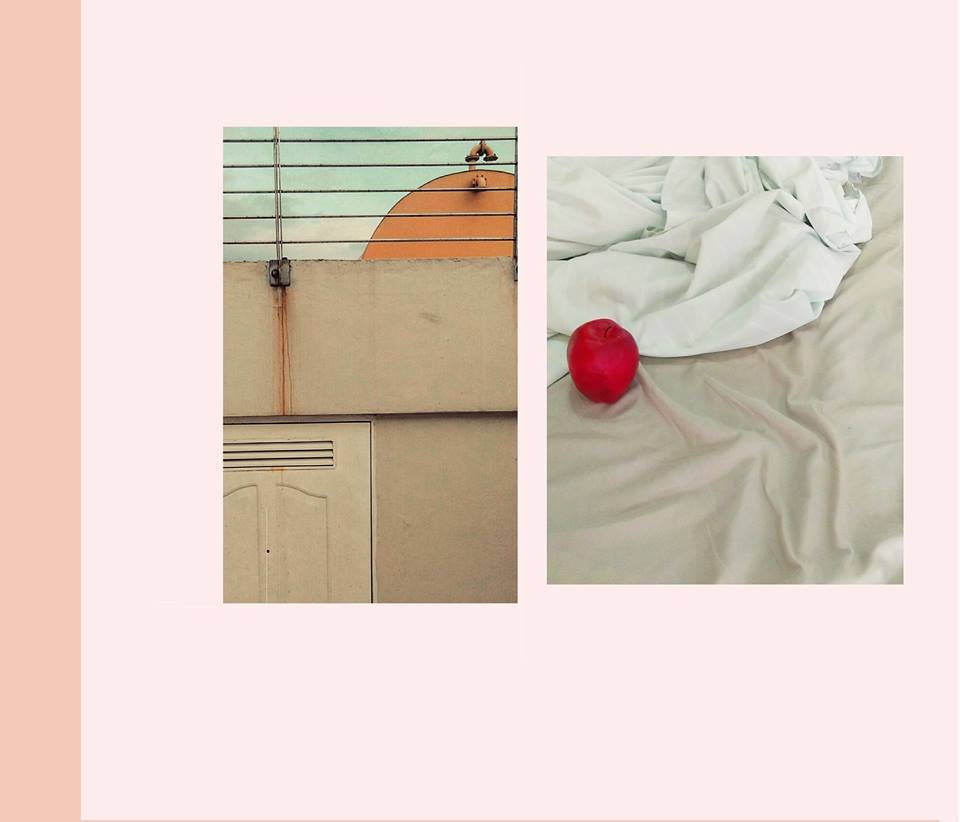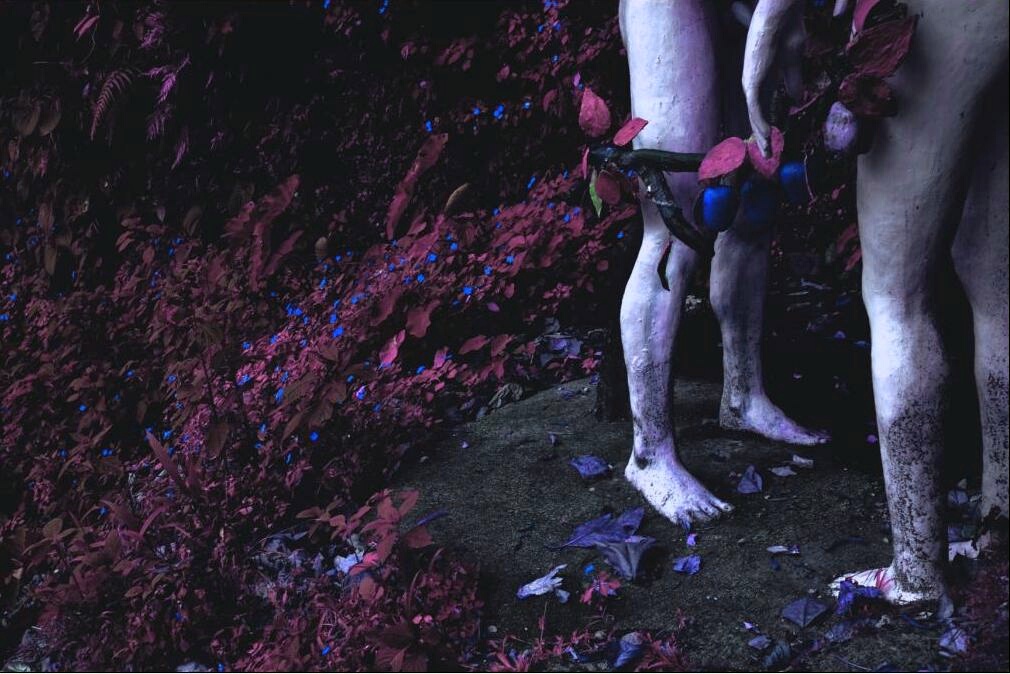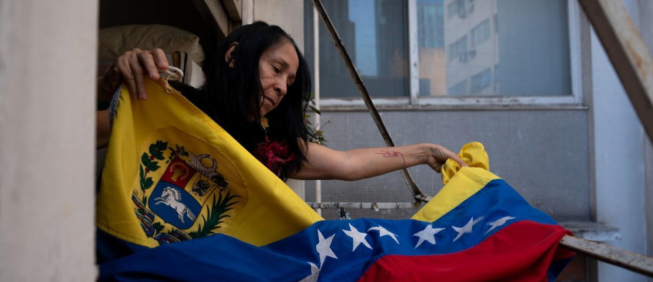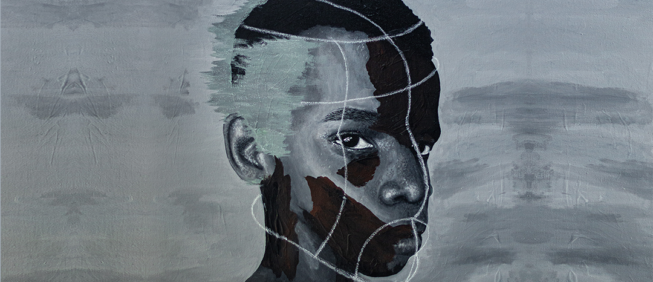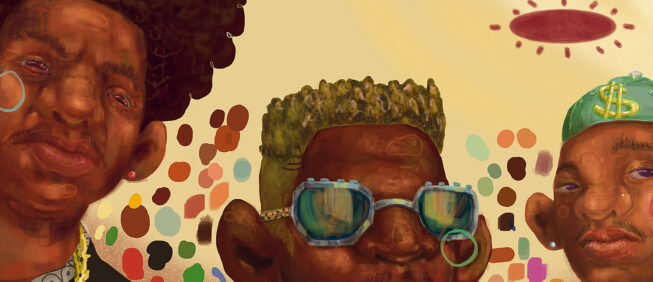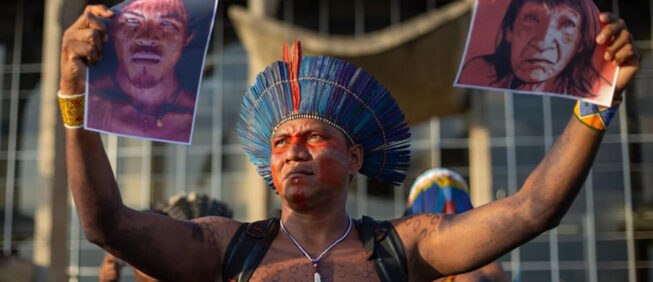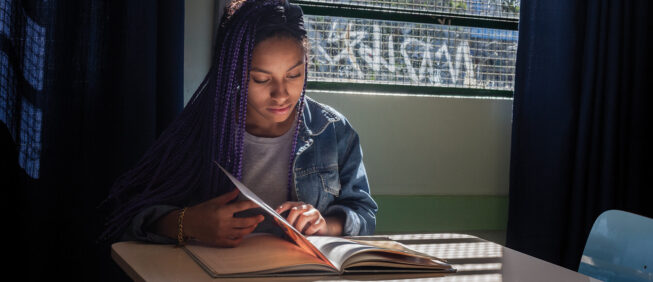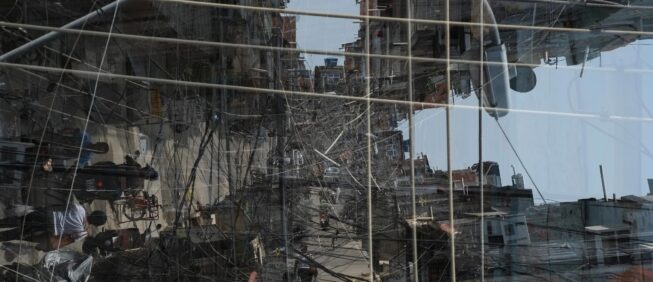The bakla, the agi: our genders which are not one
Philippine genders: ethnolinguistic premises, a Tagalog short story, and a Kinaray-a poem
Jaya Jacobo
Vincent Empimano
Macky Torrechilla
Christian Tablazon
| Philippines |
17 de July de 2019
I. The ethnolinguistic premise of Philippine genders
Jaya Jacobo
While the discourses of solidarity which promise the formation of community may require us to speak in a language that renders "gender" to be intelligible -- received within a universe that thrives in sensus communis, so to speak -- the question of difference must put pressure on "universality" and the various platforms where its singular speech is heard. Such gesture is imperative. It can only enable modes of identity outside this "always already" inclusive matrix to speak for themselves, a position that is not always assured by the frames of the postcolonial, the modern, and their hybridities.1See Aniruddha Dutta and Raina Roy, "Decolonizing Transgender in India: Some Reflections," Transgender Studies Quarterly (Special Issue on Decolonizing the Transgender Imaginary) 1, no. 3 (Summer 2014): 320-338; In understanding the travesti vis-á-vis trans in Brazil, their distinctions as well as convergences, I am indebted to my sister Mariah Rafaela Silva. Conversations on the topic with James Turner, Jimmy Casas Klausen, Siobhán McGuirk, and Marzena Zukowska are also not forgotten.
A tropic opportunity that is summoned in many circles is the individual standing in for the collective (or the personal becoming the political), so that the one and the many may be deemed to imagine entry to a utopia only characterized by equality, precisely because "gender" had been opened up to be dissimulating or transitive, in the first place. The thought that this linguistic model is prone to lapses in inclusivity should be humbling, at the same time that reminds us of how much of what is yet to be done must begin with an intimately recalcitrant encounter with language: why it misapprehends, what it disavows, how it silences.
The Philippine work package of the international creative activist consortium GlobalGRACE Gender and Cultures of Equality2The GlobalGRACE project has received funding from the United Kingdom Research and Innovation (UKRI) programme Global Challenges Research Fund (GCRF) under grant reference AH/P014232/1. It is necessary to acknowledge the conversations I've shared with mentors and colleagues in the work package: Mark Johnson, Kate Ramil, and of course, Neil Garcia. Interactions with fellows of the first national and community workshops also inspire my reflections here. Finally, Leo Fernandez Almero's trans allyship is most crucial to my thinking. seeks to address this particular predicament within global gender studies by allowing young LGBTQ writers to narrate the terms of their sufferance, the longing which is worked out from their disentanglements with a history that excludes them, and the emancipation that is conjured from this desire in everyday life. Through a national workshop that gathers a diverse group of writers in the University of the Philippines at Diliman, and a community workshop that caters to the San Pablo youth in Laguna province, the project aspires to make "life lovable" by immersing the question of genre into the emergence of gender as a primary force of artistic creation.
While conversing with a discourse theorized primarily from the former seats of empire and its neo-colonies, the local, in every step of its awkward ways, declares its autonomy to argue for its decolonial status, if not the methodology of such a project. Locality instantiates itself through the vernacular, its tropes and idioms. In this sense, once one engages the practice of translation, the relations of power between languages are revealed to be inarbitrary, and the complex processes along the strife that are summarized through untranslatability become a symptom of a resistivity from within these newfound and well-deserved entitlements of the local. Does the local remain peripheral in its emancipation? It does, in many ways, and must remain so, strategically, to articulate pedagogies and disseminate literacies of its own, so as not to stay marginal, from the periphery.
The pieces chosen for this Philippine suite as a contribution to the syllabus of gender equality to be taught from the University of the Peripheries in Rio de Janeiro feature two Filipinx poets: Vincent Empimano, who is from San Pablo, Laguna (Luzon island) and writes in Tagalog; and Macky Torrechilla, who is from Hamtic, Antique (Panay island) and writes in Kinaray-a. In the Philippines, languages are markers of ethnic difference and the cultural specificity of place. Provisionally, we can argue then that gender in the Philippine archipelago is all at once diverse and by and large variegating because of these ethnolinguistic subjectivities. Two genders which challenge the cisheteropatriarchal binary from this perspective are the bakla, configured in the "gay" language games of Empimano's "Utoy" and the agi, who foregrounds herself in Torrechilla's "queer" anti-elegy "Patyo." The images which accompany our prose and poetry are photographs by Christian Tablazon, GlobalGRACE fiction fellow for 2019.
How have the "bakla"3[On the bakla, see J. Neil C. Garcia, Philippine Gay Culture: Binabae to Bakla, Silahis to MSM, Second Edition (Quezon City: The University of the Philippines Press, 2008); Fenella Cannell, "Beauty and the idea of 'America,'" in Power and Intimacy in the Christian Philippines (Quezon City: Ateneo de Manila University Press, 1999); Martin Manalansan, Global Divas: Filipino Gay Men in the Diaspora (Durham and London: Duke University Press, 2003); Ryen Paul Sumayao and Jaya Jacobo, eds., BKL/BikolBakla: Anthology of Bikolnon Gay Trans Queer Writing (Naga City: Goldprint, 2019); On the bantut, see Mark Johnson, Beauty and Power: Transgendering and Cultural Transformation (London: Bloomsbury Academic, 1997). and the "agi" been audible in discourse? Where can we begin tracing their audibility?
The Vocabulario de la lengua tagala (1860) offers us a set of concepts which bring the "bacla" to entrench a coordinate of gender difference for the turn of the century in colonial Philippines.4I would like to thank Ian Harvey Claros for his invaluable research assistance in this segment. Enlabiar (seduction) signifies her entering discourse, and her tactic is coupled with engañar (deception), through lustre (prominence) or hermosura (beauty).5Vocabulario de la lenguatagala, s.v. "bacla." (I) A notion of bakla as device of persuasion is elaborated further as "moverse por algun interes o provecho,"6Vocabulario, s.v. "bacla." (III)to be inspired according to a motive or a sense of benefit. At the same time, the bakla signifies, through "desollarse," (to wound)a vulnerability.7Ibid., s.v. "bacla." (IV) Now the persuaded is moved to action, but he also hesitates: to be "nababacla" is to be fearful of a new thing (espanto de cosa nueva).8 Ibid., s.v. "bacla." (II) This is an early instance of homophobia and transphobia spoken in the long duration of the Tagalog language.
The lexicon is most significant in marking out the emergence of "alteracion"9Ibid. as a descriptor of the bakla or her potency, so to speak; consequently, such instance might as well be our overture to the bakla in her trans turn. A figure is able to change, in spite of a fear toward her, and because of her capacity to enchant, deceive, inspire, and even subject one to trouble. She is an index to perplexity and restlessness precisely at the moment of performing transformation. We must note however, that in these linguistic instances, the bakla, even in her trans-ness, is assembled to construct a metonym of the totalizing consciousness that engenders her as such, and not as an identity that is able to dictate the terms of recognition. I say totalizing because such consciousness that engenders does not allow itself to be changed, to be overcome, as finally engaged in a dialectic.
In the Diccionario de la lengua bisaya hiliguiena y haraya (1841)10John Paolo Sarce's immediate archival response for this part is much appreciated. , "agui" is registered as"señal" (sign), "huella" (track),"rastro de lo que paso" (trace of passage).11Diccionariode la lenguabisaya, hiliguiena y haraya de la isla de panay, s.v. "agui." It also refers to the act of walking by (pasar andando)12Diccionario, s.v. "agui." , manifesting in various aspects of the voyage, as "transitar,""transito,""transitorio."13Diccionario, s.v. "transitar"; Ibid., s.v. "transito"; Ibid., s.v. "transitorio." Paradoxically, it conducts itself as a "hidden trace" (tandang̃a tago) by way of "ostugo,"14Ibid., s.v. "ostugo." intimating the aleatory rhythm of passing through, its visibility alternating between countenance and camouflage.
The agi is configured metonymically, as phenomenal movement, but only after portraying the sensorium as unable to cope with her flux. Similar to the Tagalog bakla described above, the Kinaray-a agi in this instance is not an identity, but a series of scenes identifying some sort of difference. And because such movement cannot be located, it might as well be misapprehended.
In these readings of the "bakla" and the "agi" against the grain of the imperial archive, one may intuit gender as a sensation that must be curtailed (bakla) and an experience that cannot be reported (agi). The historical autochthony of such a priori embodiments can only be defaced to announce the legitimacy of colonial arrival.Conversing with Vincent and Macky separately, I was convinced that their texts allow the "bakla" and the "agi" to perform a kind of male-assigned but feminine-identifying personalities in Laguna and in Antique, and yet their dialogue with other bakla and agi also reveal a refusal of globally legible signifiers such as "gay," "queer," and "trans," while being open to the allure of such crossings into language. Such tension enables the decolonial south-by-south project to participate in circuits of the contemporary.
We hope that our readers may imagine the bakla and the agi as not just signifiers of gender in languages thriving to diversify our stories15In my mothertongueBikol, "agi-agi" refers to any form of narrative, from epic to romance, from rumor to novel.The chronicles moves through passageways of prosaic routes, thus retaining the sense of movement pointed out in the Kinaray-a "agi." in these parts of the planet, but also as languages themselves, engendering resistive bodies at every possible path of unfolding.
II. Utoy
Vincent N. Empimano
Alas-kuwatro pa lamang ng madaling araw ay nagising na ako dahil sa kaluskos ng mga paa sa salas. Pagkalabas ko ng kuwarto ay nakita ko si Papa na nakaayos papunta sa trabaho.
Matapos magpaalam kay Mama, sandali siyang lumapit sa akin at humalik, sabay sabing "Utoy, tulungan mo si mama sa bahay, ha? "
"Opo, Papa" mayabang kong tugon.
At tuluyan nang umalis si Papa. Maaga akong nag-almusal dahil makikipagkita pa ako kina Marco, Rap-Rap, at Bukol, mga kaibigan ko. Kaagad akong nagbihis at nagpaalam kay Mama. Pagdating sa tindahan ni Manong Alex ay hinanap ko agad ang aking mga kaibigan. Napakaraming bata sa tindahan; marahil tambayan talaga ito dahil sa mga patok nitong paninda na nakaka-agaw-atensyon sa aming mga mata. Ilang saglit lang ay nakita ko na sina Marco. May mga kasama: sina Angelica, Barbie, Eula, at Leslie. Napangiti naman ako nang palihim. Marahil dito ko magagamit ang hokage kong moves na aking inensayo sa maraming hapon.
Kaya umentrada ako: "Ehem, girls tara na?"
"Ah, ang bilis naman, ngayon na agad?, " sabi ni Eula.
"Bilisan na natin at sayang ang oras," inis na sabi ni Bukol.
At napagdesisyunan ng lahat na simulan na. Pumunta sila nang sama-sama sa isang tabi. Ikinabit na ni Eula at Leslie sa kani-kanilang binti ang hawak na lubid-lubidan sabay dumistansya nang tamang layo. Bigla naming hinapit ang aming mga shorts pataas at tuwang-tuwa sa pagtira.
"Oh! Geym!," sigaw ni Rap-Rap.
Bumuwelo ako sabay talon: "10, 20, 30, 40, 50, 60, 70, 80, 90 ... Wan handred."
At ayun, nasimulan na namin ang masayang laro na ten-twenty. Siyempre hindi ako nagpakabog kina Eula kaya ginawa namin ang aming magagawa para di kami mataya. Iniligtas ko si Bukol dahil masyadong maiigsi ang kanyang mga biyas. Tuwang-tuwa ang mga bading dahil di nakatira ang mga babae. Kembot nang kembot ang mga bading na para bang nang-iinis.
"Ikembot mo, ikembot mo," sigaw nina Marco, Rap-Rap, at Bukol bago ako tumira.
Ngunit bigla silang tumigil sa pagkanta.
"Ikembot mo, ikembot mo," mahinang kanta lang ang naririnig ko sa likod.
"Oh? Ba't humina ang kanta?," mayabang kong sagot.
"Laksan nyo, ikembot mo, ikembot mo!,"sigaw ko.
At napatigil sa pagkanta ang batang bading dahil nakita niya ang lalaking nasa likod: si Papa!
Little Boy
The screeching sound of feet in our living room roused me from sleep. It was 4 am. When I went out of my room, I saw Father all dressed up for work.
After saying goodbye to Mother, he turned to me, and kissed me on the cheek, saying, "Little Boy, help your Mother with her chores, okay?"
"Yes, Father," I proudly responded.
Father finally left. I ate breakfast early because I needed to meet up with my friends Marco, Rap-Rap, and Bukol. I eagerly dressed up for my meeting, and said goodbye to Mother. I immediately looked for my friends upon reaching Big Brother Alex's store. There were lots of children; they all probably hung out there because of the mouth-watering sweets on sale. I saw my friends after a few seconds. They had company: Angelica, Barbie, Eula, and Leslie. I smiled in secret. I would probably be making use of the hokage[mfn] This Japanese term is derived from the manga Naruto; it is used to describe a skilled and powerful warrior. The word is refunctioned by millennials to describe choreographic movements which resemble the agility of these characters as they are seen in anime adaptations of the manga. [/mfn] moves I've rehearsed for many afternoons.
I began: "Ehem, girls, let's go?"
"Wait a minute, you really want it now?" Eula said.
"Let's do it, we can't be wasting time," Bukol was exasperated.
Everyone decided to begin. They all huddled together in a corner. Eula and Leslie tied the rubber band rope to their thighs then maintained a certain distance. We also folded the hems of our shorts and positioned ourselves to each take a shot.16Two teams toss coins. The team that bets on the side of the coin that turns toward the sky is given the first turn) to jump through the rubber band rope tied to the thighs of two members of the opposing team. Each member of the team jumps with a count based on "10" and may do so until "100," as long as no part of one's body touches the rope.If that happens, the whole team becomes the "it," statuary to their opponent's dance against the ground.
"Oh! Game!," yelled Rap-Rap.
I gathered my energy and then jumped: "10, 20, 30, 40, 50, 60, 70, 80, 90, One hundred!"
And there it went, our jolly ten-twenty game. Of course I did not allow Eula and the girls to beat us, so we did everything not to become the "it." I had to save Bukol because his "feet" were too short. The badings17Bading is a more contemporary incarnation of the bakla; the term was widely circulated transmedially in the late nineties until the first few years of the new century. I leave the term untranslated to let it embrace gay, queer, trans identities. were so gleeful that the girls didn't have a chance at all. We were swaying our hips vigorously, as if taunting them.
"Sway your hips, sway your hips," shouted Marco, Rap-Rap, and Bukol before my turn.
And yet they all halted to sing.
"Sway your hips, sway your hips," I was hearing a faint song at the back.
"Why did the song turn way too soft?," I responded mockingly.
"I want it louder, sway your hips, sway," I screamed.
And the young bading could not continue her song when she saw the man behind: her Father!
Translated by Jaya Jacobo
III. Patyo
Macky Torrechilla
Saksi ang dëlëm,
Ang mga panulay,
Ang mga tamawo,
Kag ang mga murto nga nagapahimëyëng sa binit-binit
Sa ingës kang darwa ka lalang.
Dya kita sa mga nagaturog,
Dya kita sa mga nagapahuway.
Dya ko idupra,
Patyën kag ideretso lëbëng
Ang puturo kang mga bata
Nga daad nangin doktor,
Maestro, inhinyero, seaman,
Tambay, alpot, adik,
Ukon kriminal.
Cemetery
The dark witnesses
demons,
elementals,
ghosts
quiet in the corner
before the moans of two souls.
Here, they sleep,
here, they rest.
Here, I’ll spit,
kill, and bury
the future of those
who would have been doctors,
teachers, engineers, seafarers,
the unemployed, prostitutes, addicts,
criminals.
Translated by the author herself and edited by Timothy Ong and Jaya Jacobo
Bibliography
Cannell, Fenella Cannell. "Beauty and the idea of 'America.'" In Power and Intimacy in the Christian Philippines. Quezon City: Ateneo de Manila University Press, 1999.
Dutta, Aniruddha and Raina Roy. "Decolonizing Transgender in India: Some Reflections." Transgender Studies Quarterly (Special Issue on Decolonizing the Transgender Imaginary) 1, no. 3 (Summer 2014): 320-338.
de Mentrida, Alonso, ed. Diccionario de la lengua bisaya, hiliguiena y haraya de la isla depanay. Manila: D. Manuel y de Felis S. Dayot, 1841.
de Noceda, Juan and Pedro de Sanlucar, eds. Vocabulario de la lengua tagala. Manila: Ramirez y Giraudier, 1860.
Garcia, J. Neil C.. Philippine Gay Culture: Binabae to Bakla, Silahis to MSM. Second Edition. Quezon City: The University of the Philippines Press, 2008.
Johnson, Mark. Beauty and Power: Transgendering and Cultural Transformation. London: Bloomsbury Academic, 1997.
Kishimoto, Masashi. Naruto. In Shonen Jump. San Francisco, California: Viz Media, 1997.
Manalansan, Martin. Global Divas: Filipino Gay Men in the Diaspora. Durham and London: Duke University Press, 2003.
Sumayao, Ryen Paul and Jaya Jacobo, eds. BKL/Bikol Bakla: Anthology of Bikolnon Gay Trans Queer Writing. Naga City: Goldprint, 2019.

Jaya Jacobo | Philippines |
Postdoctoral Early Career Researcher of the GlobalGRACE Philippine Work Package at the University of the Philippines and YMCA San Pablo
lajayajacobo@gmail.com
Macky Torrechilla | |
MackyTorrechilla was crowned Miss Gay Hamtic in 2017, in Antique, Philippines.

Vincent Empimano | Philippines |
Vincent Empimano is a grade school teacher in San Pablo City, Laguna, Philippines.

Christian Tablazon | Philippines |
Christian Tablazon runs Nomina Nuda, a small, nonprofit independent platform and exhibition space in Los Baños, Laguna, Philippines.
